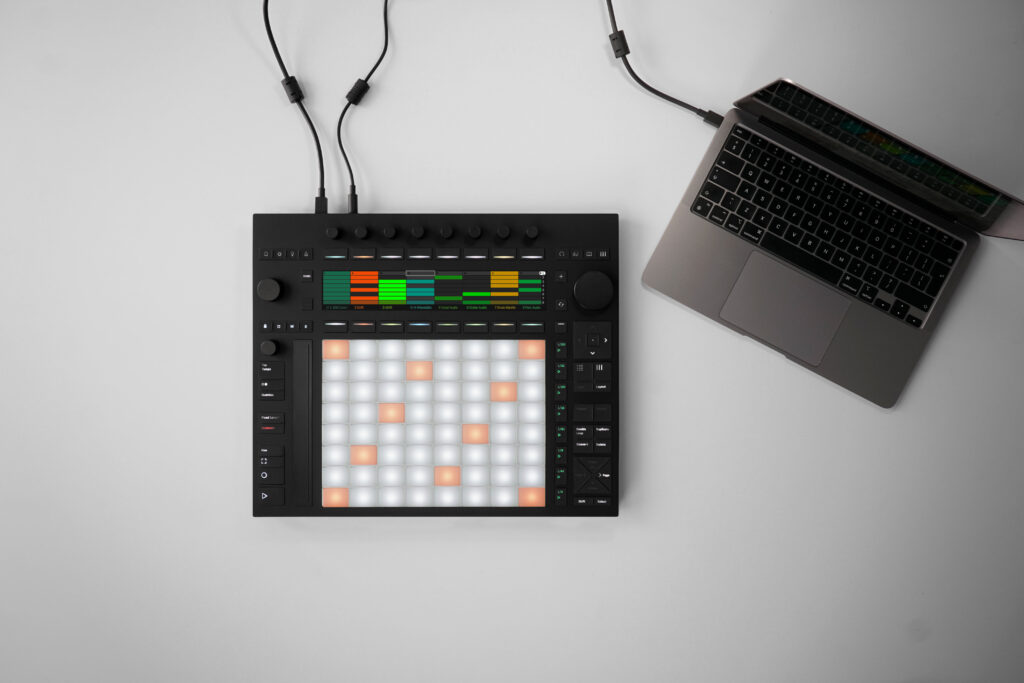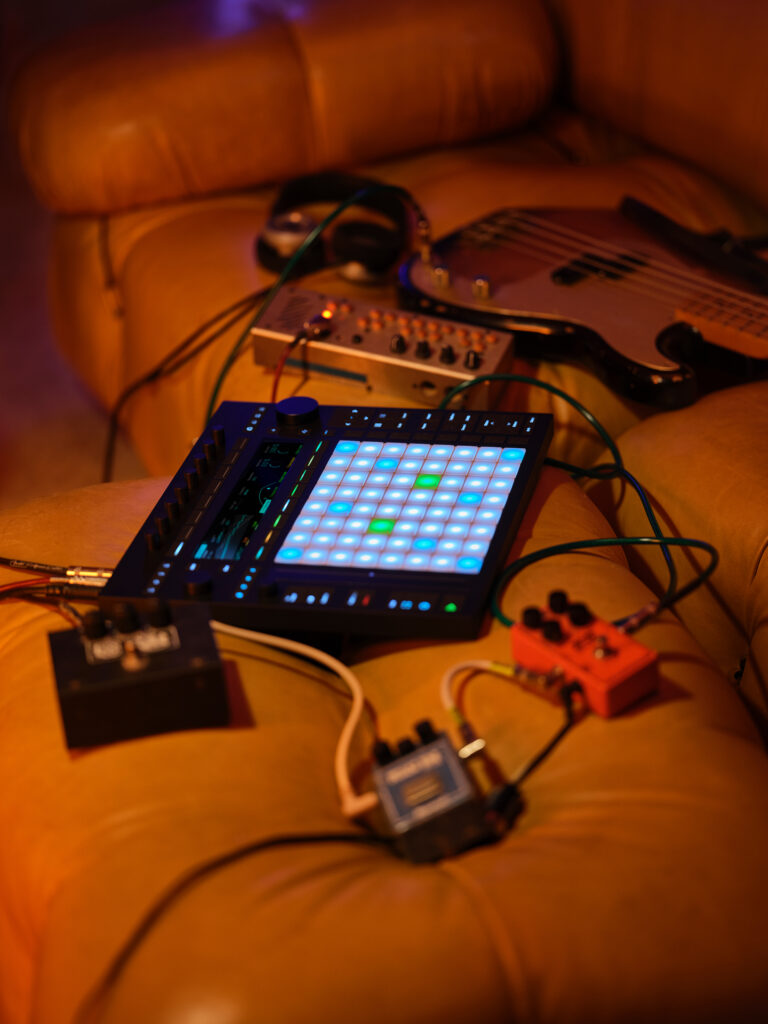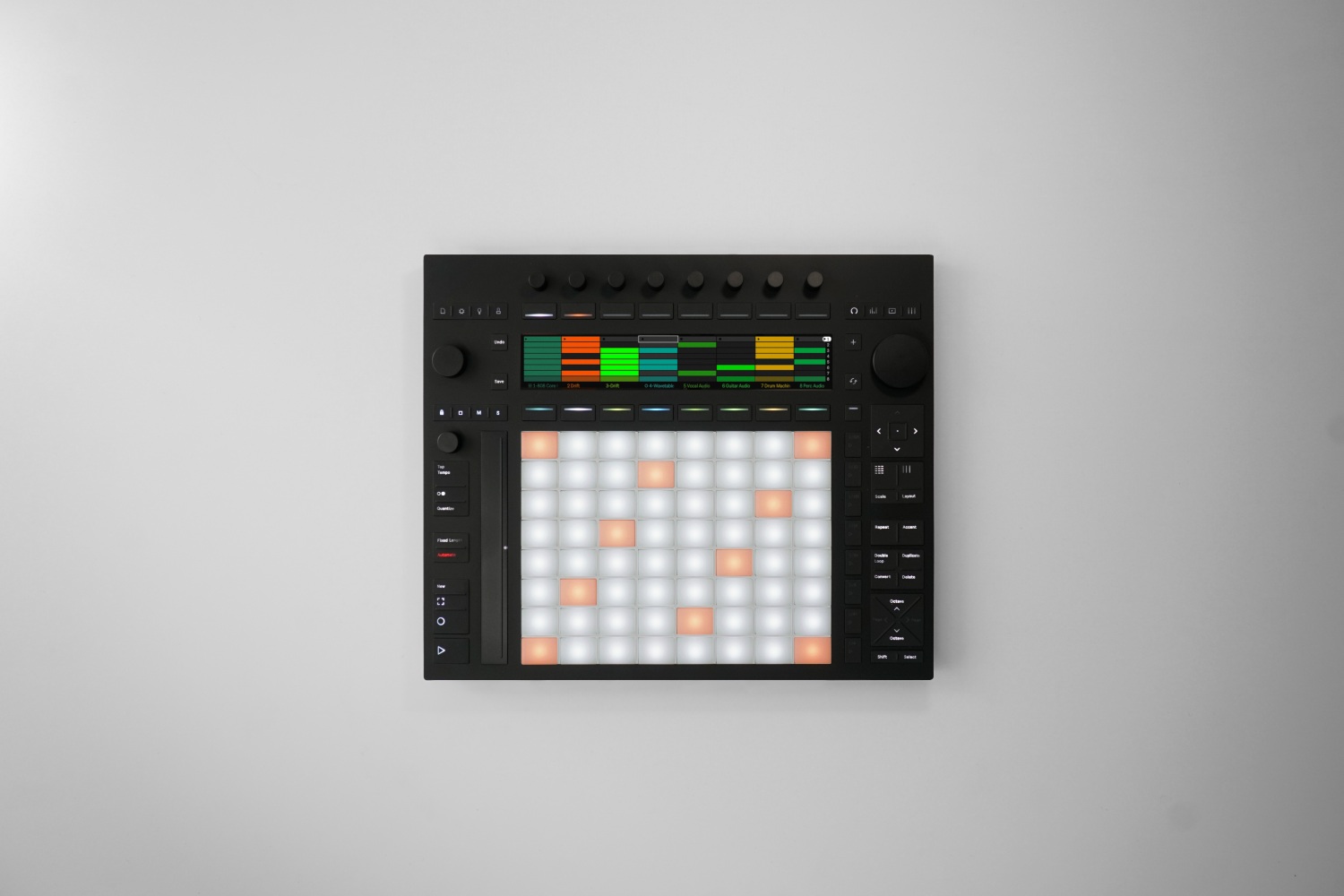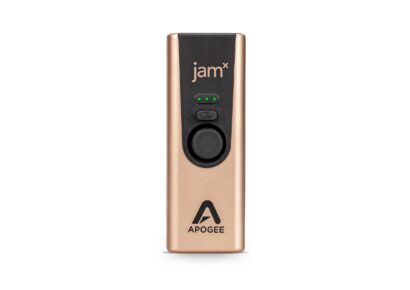Ableton Push | Ableton | RRP (AUD): $1499 for without processor and $2999 with processor
The rumour mill has been working overtime with Ableton Live enthusiasts. For years, Reddit communities have been stating fancifully, “I heard from an inside source that the next Push will be out next week”. Leaked images have been debunked as “fake news”, with people left scratching their heads. A recent Ableton Live beta release heralded a new Instrument Device, titled Drift, featuring a host of new midi MPE (MIDI Polyphonic Expression) functionality and the rumours started up again. Some of the more astute among us have noticed that Push 2 stocks have dried up as well. Surely the hour is nigh? In fact, the wait is finally over. The third iteration of Ableton Push, simply titled – Push, is finally upon us. Let’s take a first look at what the Ableton have dreamt up for us over the last few years.
Read more gear reviews here.
In 2001, Ableton, at the time a plucky start-up founded by Gerhard Behles, Robert Henke and Bernd Roggendorf, dared to take on the big players with the release of Live Version 1. Over the next 20 odd years, Live progressed from a unique audio clip player, to one of the most exciting DAW-cum-Performance applications on the market. In 2012, Ableton entered the hardware market with the release of Push 1; a 64 pad instrument and controller dedicated to creation and performance using Ableton Live. The unique layout of the pads made Push 1 far more than a beat box, and before long users were putting together impressive performances combining audio, beats and melodic phrases, performed in real time.
Push 1 proved to be a resounding success and rapidly found a host of devotees. In 2015, Ableton followed up with the release of Push 2. This iteration revealed a host of new features: a larger colour display with a finer resolution, upgraded pads, a mixing desk view displaying real time peak and RMS audio levels as well as some substantial workflow improvements. Fast forward to May 2023, and the newest addition to the family arrives. The arrival of Push, the new controller/workstation, updates Ableton’s offerings, alongside Live and the OS X app, Note. The update from Push 1 to Push 2 was substantial, but with the release of Push, the change is gargantuan. It would be impossible to cover all of the features without dedicating an entire Mixdown Mag to the task (Dear editors, can we? Please?). Instead, we’ll look at some of Push’s most jaw-dropping features. Spoiler alert: there are many.
(It is important to note the Push and software provided for review, are still in the beta stage so features and functions at release may differ.)

First Impressions
As we have come to expect from Ableton, the packing is minimal and sleek. When the lid is opened, the first thing that grabs your attention is the 64 pristine, white touch pads. The unit is visually stunning and screams class. Upon power up, the 8 x 8 pad grid flickers to life with a pleasing animation across the pads. Push comes in two configurations.
The configuration with a processor has an internal CPU processor, RAM and hard drive. The configuration without a processor ships without these, so it will always need to be connected to a host computer running Live to function. Later in 2023, upgrade kits will be available, and users will be able to upgrade the tethered Push to operate in standalone mode. Nice! The pads sit proud of the body of the unit making it possible to slide between them without obstruction. Once powered up and connected to Live, the incredible sensitivity and feel of the pads, quickly becomes apparent. A host of new MPE features turn each pad into an X and Y control surface that can be used to bend pitch, pitch-slide between notes, perform filter sweeps, add vibrato to instruments and even trigger different sample layers – but more on these features later. Another nice feature is the ability to display named clips in the display as you would see on a computer using Session View.
Existing Push 1 + 2 users will find Push at once familiar, and foreign. Some buttons have been relocated and many buttons are now furnished with backlit graphical icons, rather than text. With the quick start guide handy, these changes quickly become second nature. A number of new buttons prove to be welcome additions. A new Lock button allows the Mute, Solo buttons to be toggled “on” allowing users to a make a series of mutes or solos, using the lower display buttons, without the need to hold down the Mute or Solos buttons, as was previously the case. Locking the new Stop button to a track, changes the functionality of the lower display buttons to stop clips when pressed. The Learn button had limited, but useful, information during my time with the unit but will expanded tutorials at launch.
Push Stands Alone
Without a doubt, the biggest change is the introduction of the standalone mode. In 2023 it would be safe to say that most of us are reaching the point of exhaustion when it comes to looking at screens. From work, to phone, to TV to DAW life, the black mirror endures, staring back deep into our souls. I confess that my enthusiasm for creating music, exacerbated further by the extensive lockdowns and pivot online for almost every aspect of life, has waned somewhat in recent years. When it comes to writing tunes, the thought of sitting down to a computer increasingly fills me with dread. Intrusive on-screen reminders pop-up, emails nag for a response, social media beckons, and even the process of keeping your DAW of choice and plugins up to date, is fast becoming a full-time job. Push changes that. The ability to disconnect from all of this is both liberating, and inspirational.
With Push on my lap, in standalone mode, I immediately notice the hefty 3.95kg weight of the unit, but am surprised that after a few hours, I was still tapping away with no feeling of discomfort. Kudos to Ableton for keeping the heat low as well (you could fry an egg on my MacBook Pro after 10 minutes of working with any DAW!)
At first, I found myself repeatedly reaching for the mouse/trackpad to perform certain tasks that were either not possible, or habitually performed, on the computer. Over time, the habit abated, and I found myself spending more time writing, and less time tweaking, which came as a welcome surprise. Working with Push has the potential to make time accelerate, as there is nothing else you can do but create. Hours flew past without me noticing and the music flowed. Working solely with Push in standalone mode, I quickly became more adept at editing MIDI clips and notes. To my knowledge, this workflow hasn’t changed greatly since Push 2, but the fact that you can’t reach for a mouse, hones those skills, fast. Once ideas are developed in standalone mode, you drag and drop the project back to Ableton on a computer, to sequence and mix. It is possible, however, to route the audio outputs into the inputs and record/resample a finished track directly on the Push as well! DJ’s and performers will love fronting up to gigs with just Push in their hands and sets can be recorded easily by routing the outputs of a DJ mixer to the inputs of Push to record live performances using the new audio I/O.
MPE
As a drummer and guitarist, the range of expression available is almost limitless, and often taken for granted. MIDI keyboards and controllers have never achieved the same heights of expression. As an instrumentalist, you don’t think about the incredible timbral varieties available to you, rather, you employ them without thought. Powerful hits to a tom-tom automatically have more a more biting attack, and the pitch of the drum gently drops. Off-centre drum hits provide a feast of tone and timbre. Ride cymbals can be pinged on the bell, washed out with the shoulder of the stick, or used like a crash. Incredibly, the MPE implementation on Push brings this to your fingertips. By varying the taps of a pad, up/down or left/right, a host of sonic variation is available. Admittedly, the surface area of each individual pad is limited in comparison to an instrument, but startlingly realistic jazz inspired ride patterns can be easily tapped out. In what must have been a difficult design decision, size vs function, the resulting pad size is big enough, and no more. Kicks and snares come to life with a solid tap to the middle of a pad, resulting in a satisfying crack. Gentle taps at the bottom of a pad allow for snare ghost strokes and pillowy kick punctuations. It will be exciting to see how virtual instrument designers and Ableton will exploit these functions for both realistic and creative sounds.
Until now, single string, double stop and Nashville bends remained the purview of guitarists. Push changes that. For the first time on a piano, you can hold two notes of a chord and bend a third into a new pitch. Country gold, right there! The bends sound incredibly smooth as you slide fingers across the pads to voice chords or single note bends. The sensitivity of the pads, tweaked further in the Setup Menu, brings the Spitfire Audio Upright Piano Pack to life, with vibrato possible, using a gentle wiggle akin to that performed on a cello, sounding equal parts haunting, and surreal. The faintest of touches coaxes the faintest of sonorities into existence. (Picture Olafur Arnalds and Nils Frahm fighting over who can play the quietest note!) Further configuration allows the centre pitch of each pad to be changed from where the finger lands, to the centre of the pad. When changed to the centre of the pad, striking the pad left or right of centre drops or raises the pitch accordingly. Low-fi keyboard lines, with drifting pitch wonk, can be played in without the need for plugins or automation. Experimenting with the updated Spitfire Audio String Quartet Pack brings further joy. Gentle pressure to the pads yields ethereal sounds from the new flautando articulations, with a degree of tactile control I’ve not yet experienced via MIDI.
At release the following Ableton Instruments will have MPE functionality: Analog, Collision, Drift, Electric, Sampler, Tension, Wavetable, and Expressive Drum Racks. MPE functionality can be extended further by pairing Push with the Ableton devices: MPE Control and Expression Control. MPE Control, makes it possible to change the range and curve of incoming MPE data to fine tune expression. Additionally, this Device allows MPE control of non-MPE instruments and Pressure Commands can be changed to Aftertouch, Slide to Modulation and Note Pitch Bend to Pitch Bend. Modulation commands can yield realistic vibrato an any Instrument Device. Wild rhythmic filter abuse can be achieved using the same workflow. (Skrillex, go easy!) The Expression Control device allows the MPE Pressure, Slide and Individual Note pitch bend commands to be mapped to any parameter within Ableton Live. Short room reverb on the snare? Tap at the bottom of pad. Wild dub echo on the snare? Tap at the top of the pad. Mapping the mix parameter of a reverb to Slide, then tapping from top to bottom on a pad makes it possible to fade up reverb on a drum fill or chorus, without resorting to automation. Using MPE to control the speed of modulation style effects like tremolo, phaser or rotary speaker will give producers even more creative options, literally, at their fingertips. Much of the configuration of these devices will be necessary using Live via a computer. The changes are then copied back to Push for use in standalone mode. The Sampler Device can be configured, again via computer, to use MPE commands to modulate a broad range of parameters including, sample selection, pitch, sample start and loop point, volume, pan, LFO rate and more. Multiple snare sample on the same pad? Assign the Slide parameter to sample select, and you’re away. In use, the MPE functionality is spectacular.
Expanded I/O
For the first time Push features audio inputs and outputs (I/O): 2 inputs, 2 outputs, headphone out and an additional eight via ADAT optical for both inputs and outputs. By way of a downward press, the Volume Encoder to the left of the unit, cycles through volume control for the audio interface outputs, headphones and cue levels independently. To balance the eternal dance that is the trade-off between performance and latency, Buffer sizes can be adjusted by tapping the Setup button. In standalone mode, the new audio and MIDI I/O, make it possible to program, sequence, monitor and record audio from external synths and drum machines directly. Synths, samplers, guitars, basses, as well as dynamic and passive ribbon microphones can be connected directly to Push’s inputs and recorded into the Audio Clip Slots. An external preamp will, however, be required to connect turntables, condenser mics, DI’s or any device that requires phantom power. From my testing the audio I/O sounds pristine and Push could certainly take the place of an audio interface. If additional channels are required, Push can be paired with an ADAT capable preamp/convertor. This provides the ability to record up to 10 channels of audio, simultaneously, making Push a serious piece of hardware indeed. Recorded Audio Clips can be tweaked or loaded into Simpler to create MIDI instruments, but extensive audio editing is not possible at this point. Using the External Effects Device, in concert with the audio I/O, it is also possible to patch hardware effects or dynamic processors into the Push and run projects through these devices as well. Yes, you can patch in that fancy rack compressor you dropped $5k on with your Covid stimmy cheques.
Those among us with God tier keyboard skills will rejoice at the inclusion of a USB MIDI port. Using this, it is possible to connect and power an external MIDI keyboard or controller to play instruments and control Live, even in standalone mode. To allow more control over Push when in standalone mode, all of the existing controller scripts have been included, so, when a Live compatible external MIDI controller is connected via USB, all of the functionality of the device will be available without further configuration. An incredible feat of design and engineering.
Modular freaks will be excited by the CV I/O and tools provided as part of the in the CV Tools Intro Pack. After a small number of internal tweaks via the Setup button, Push can output CV data to any connected hardware capable of CV control. Outputs from the modular can be sampled or mixed using the onboard audio inputs.
File management over Wi-Fi.
Once connected to a Wi-Fi network, Push can access the internet directly to download firmware updates and content. I’m only slightly joking when I say, thankfully, there are no ads for more content, internet browser or ability to access social media feeds (hey, in this day and age, anything’s possible!) The workflow to move project files and samples on and off the 256gb hard drive is streamlined and effective. With Push in Standalone mode, the device shows up in the Browser on the left, and a single click, makes the connection. Before you look to move a project from your computer to the Push, be sure to use the “Collect All and Save” function from the File menu to ensure that all of the samples and recordings required for the Live Set are present. Once this has been completed you can copy the project folder, from your computer to Push, with a simple drag and drop. Sets can be moved back to the computer, for arrangement and mixing, by doing so in reverse. The content transfer rate is satisfyingly fast. It is nice to see Ableton have implemented Link mode on Push to allow multiple Ableton users, on the same Wi-Fi network, to remain in sync, with a master device providing tempo sync to the other devices. My time with the demo unit was limited, so I’m not sure if the Max4Live device, Beatseaker, makes it possible to chase the tempo of a live drum mix connected to the audio inputs? All will be revealed in time.
Ableton’s massive library of Packs, Presets and Max4Live devices, can be downloaded directly from within Push via the Ableton servers, in a two-step process that sees the files downloaded first, then, an option to install the Pack becomes available. Due to the file sizes of some Packs, the download can take some time, but the elegant workflow allows you to keep working while waiting for packs to download. Once downloaded and installation has been started, Push is offline for a period while the data is unpacked and installed. Ableton Suite comes with more than 80gb of contents so prudent curation and management of sounds will be essential. In use, the hard drive is large enough to store a large number of projects, especially if the Live Sets draw heavily on MIDI instruments. Large audio projects at 88k sampling rates will be another story altogether.

Max4Live, Instruments and Effects
Using Push in standalone, Max4Live Devices function as expected and any device that you have purchased from Ableton directly, will appear in the Available Packs folder for download and installation, on Push. Any purchased or downloaded outside the Ableton store can be dragged and dropped to the desired destination folder from Live’s Browser, and accessed from there. This same drag and drop workflow allow you to manage Clips, Defaults, Grooves, Instrument and Effects presets, Samples, Max4Live devices and Presets.
Push does not support loading or controlling third party VST instruments and effects in standalone mode, so any presets that include VSTs will not load. When working with Live Sets that contain third party VST’s or VSTi’s, you are prompted to freeze any tracks prior to the transfer across to Push. The clips will play back as audio, but no editing of the underlying MIDI data is possible. Once transferred back to the computer, these tracks can be unfrozen and edited as required. It isn’t clear if Ableton are working towards implementation of third party VST’s in the future. To be honest, I hope that they don’t go down that road. Push has an incredibly rich feature set as it stands, and no small learning curve as a result. Adding more, in my opinion, would only detract from usability. To implement VST compatibility, it would be reasonable to assume plugin developers would need dedicated custom installers, and authorisation protocols for licensing. Should Push take-off, this could be an eventuality, but I think the likelihood is slim. Developers are already stretched with constant plugin updates for OSX and, to a lesser extent, Windows. On top of the drive to innovate new tech, the requirement to create new installers and authorisation protocols, would be excessive. Instead, we might see the porting of VST’s to Max4Live devices using technologies similar to Cycling74’s RNBO (pronounced rainbow). RNBO allows programmers to export Max patches to almost any format including VST, AU, Max4Live, Max Objects and web objects. Ableton used this technology to develop the Learning Synths website. From my understanding, whilst it is not possible to import existing code into RNBO, it is possible to script custom DSP objects in addition to those already present within the Max MSP code base. Without a crystal ball, it’s impossible to know if RNBO will be used specifically for this purpose, but I’m happy to wager the Max4Live space is going to get a lot busier as Push matures.
The menu navigation system works well, using the large jog wheel and directional pad, but folders overloaded with sounds, devices or presets can be frustrating to scroll through. To ease the pain, Ableton’s addition of the colour coded Collections menu for favourites is welcomed. Instantiating Ableton’s native audio and MIDI effects devices onto a track is simple and many of the devices have received graphical updates. The neat icons make navigation and parameter selection faster and represent a genuine quality of life improvement. At the time of testing, only the Compressor Device, appeared to provide visual gain reduction information. Hopefully Ableton will alter the GUI’s of the Glue Compressor, Limiter and Multiband Compressor to add this important feature in an update.
I didn’t find a way to group audio or instrument Devices into Racks whilst using Push, but Macros and Racks, created on the computer version of Live, work as expected and deep editing of Device parameters remains possible, per the previous Push 1 + 2 workflows.
Summing Up
Ableton are to be congratulated on the release of Push. The quality of the manufacturing is stunning and the pads are simply incredible in use. Bringing together standalone operation, 64 MPE enabled pads, CV, MIDI and audio I/O plus the almost limitless sound design possibilities when used in concert with Live, Ableton have made Push, an object of desire. Manufacturers of competing hardware beat boxes and DAWs will have to innovate to remain competitive, and fast. At $2999, the Push standalone configuration, with processor, RAM and storage drive, represents a serious financial investment which may prove to be too pricy for many. That said, a tethered configuration, without the processor, RAM, storage and ability to run in standalone, will cost $1499. A future upgrade kit, priced at $1499, will allow the tethered configuration to be upgraded to Standalone. Ableton has indicated that the roadmap for Push will also include future processor upgrade kits to increase the longevity of the device – fantastic forward thinking. When compared to standalone products at similar prices, Push presents an incredible feature set at a comparable price. It is going to be a fascinating journey to see what producers and musicians create with Push, and plugin and instruments developers will surely devise some ingenious, unexpected uses for the MPE pads.
So, the question is, “Will Push be a game changer?”. I think on many levels, the likelihood is very high.
For more information, head to Ableton.

